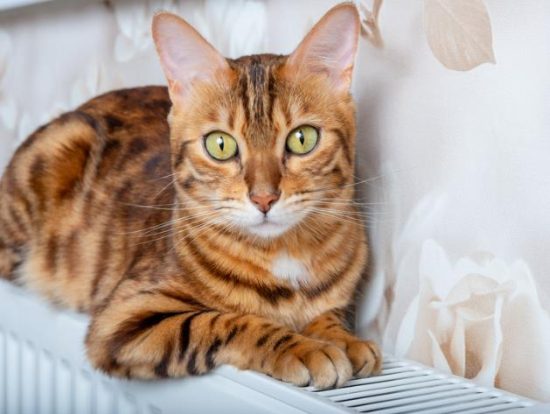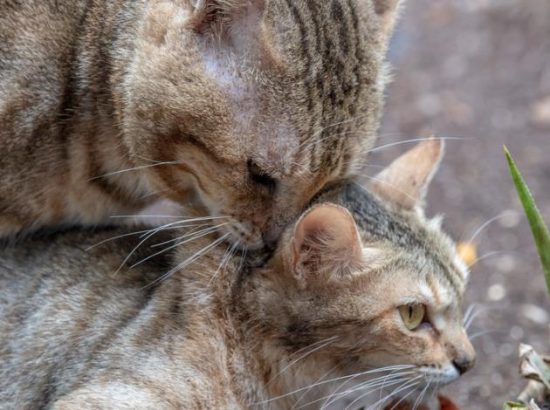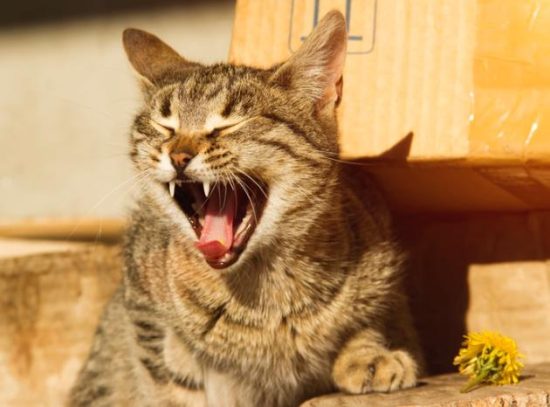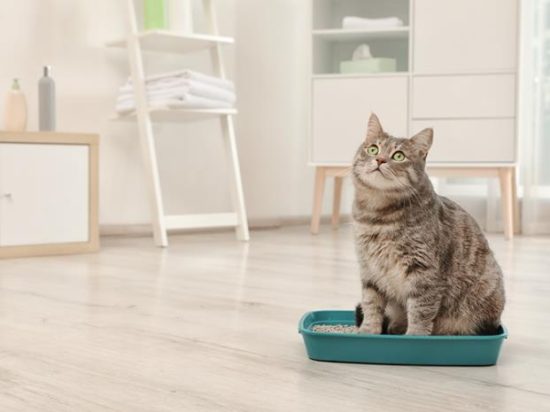How Long Are Cats in Heat? What You Need to Know
How long are cats in heat? Get insights into the feline estrus cycle, its duration, signs, breeding season, and managing heat cycles responsibly.

Do you know, In German “Paarungszeit Katzen”, means Mating season of Cats. Intact female cats, known as queens, need to be in heat to make kittens. This happens a lot differently than with dogs or people. It’s vital to know the signs of a cat in heat if you don’t spay your feline. The first heat cycle usually happens between 5 and 9 months of age. When it starts, it can vary based on the cat’s breed, weight, and even the time of year. The cat heat cycle has four stages. The main stage, estrus, or being “in heat,” lasts about a week. But, it can be as short as 3 days or as long as 14. Female cats only ovulate or release eggs if they mate at this stage.
Key Takeaways:
- Cats can start going into heat as early as 3-4 months old, with most experiencing their first heat cycle between 5-9 months of age.
- The cat heat cycle consists of four main stages: proestrus, estrus, interestrus or metestrus, and anestrus.
- The “in heat” or estrus stage typically lasts around a week, though it can range from 3-14 days.
- Cats are induced ovulators, meaning they only release eggs if they mate with a male cat during the estrus stage.
- Recognizing the signs of a cat in heat is important if you haven’t spayed your feline companion.
Understanding the Cat Heat Cycle

Cats have a heat cycle, which readies them for mating and having kittens. This cycle includes four stages: proestrus, estrus, interestrus or metestrus, and anestrus. In the proestrus stage, a cat’s estrogen increases, but she won’t mate.
Cats show the most obvious changes during the estrus stage, which lasts about a week. They become more vocal, restless, and ready to mate. If they mate and ovulate, they move into a pause called interestrus or metestrus for 30-40 days. Without mating, they have a 1-3 week interestrus period, then the cycle starts again at proestrus. Cats have no hormonal activity during anestrus, which lasts 2-3 months. This usually happens in winter when days are shorter, affecting their fertility and health.
At What Age Do Cats Go into Heat?
Female cats start their first heat cycle between 5-9 months old. Some can start as early as 3-4 months. Others may not start until around 18 months. The time they first go into heat can be influenced by their breed, weight, and the time of year.
The cat breeding season begins in spring and goes through fall. During this time, cats are more likely to go into heat. Signs of heat in cats include being loud, restless, and wanting to mate.
Knowing when your cat might go into heat is key to managing their reproductive health. Getting regular vet check-ups is important. This helps discuss spaying options or controlling unwanted litters.
How Long Are Cats in Heat?
A cat’s heat cycle can vary in length. The “in heat” period usually lasts about a week, but it could be between 3 to 14 days. It’s important to understand this cycle to take care of your cat’s health.
Proestrus Stage
The proestrus stage is the initial phase of a cat’s heat cycle, lasting about 1-2 days. During this time, female cats may begin to exhibit subtle signs of being in heat, such as increased affection towards their owners, frequent rubbing against objects, and a noticeable but mild change in vocalization. However, they typically will not yet allow mating. Hormonal changes prepare the cat’s body for ovulation, leading to more pronounced behaviors in the subsequent estrus stage.
Estrus Stage

The estrus stage, commonly referred to as “heat,” is when the female cat is most fertile and receptive to mating. This phase lasts around 4-10 days, during which the cat exhibits clear signs of being in heat, such as loud, persistent vocalization (calling), restlessness, rolling on the floor, and increased affection. She may also assume a mating position with her hindquarters raised and tail to the side when petted. If mating occurs, ovulation is induced, but if not, the cycle will progress to the next stage.
Interestrus or Metestrus Stage
The interestrus or metestrus stage is a period of about 7-21 days between successive estrus phases if the cat does not become pregnant. During this stage, the overt signs of being in heat diminish, and the cat returns to a more normal behavior. If the cat has not mated, she will not display the same intensity of estrus behaviors, but she may still show some mild signs until the next cycle begins. This stage is essentially a brief resting period before the heat cycle resumes.
Anestrus Stage
The anestrus stage is a period of sexual inactivity that typically occurs during the short daylight months of fall and winter. During this phase, which can last several months, the cat’s reproductive system is at rest, and she will not go into heat. The absence of hormonal activity means that the cat will not exhibit any heat-related behaviors. This stage provides a natural break in the reproductive cycle, influenced by the length of daylight, and prepares the cat’s body for the next breeding season.
Signs That a Cat Is in Heat
Females show they’re in heat through their behavior. They become extra loving, rubbing against people and things. They’re restless, and they meow or yowl a lot more.
Vocal Changes

One of the most noticeable signs that a cat is in heat is a significant increase in vocalization. Female cats often become much more vocal, producing loud, persistent yowling or calling sounds. This behavior is a way to attract male cats and indicate her readiness to mate. The vocal changes can be particularly intense, sometimes resembling cries of distress, which can be surprising to cat owners. These vocalizations typically occur both day and night, potentially disturbing the household.
Physical Changes
During a cat’s heat cycle, several physical changes become apparent. The most notable change is the cat’s posture: she may assume a mating position, with her hindquarters raised and tail held to the side, especially when petted or stroked. This is known as lordosis. Additionally, there might be increased grooming of the genital area, which can appear swollen or more pink than usual. Some cats also exhibit a rolling behavior on the floor and increased affectionate behavior, such as rubbing against people and objects. These physical signs are all part of the cat’s natural reproductive behavior to attract a mate.
| Behavioral Changes | Vocal Changes | Physical Changes |
|---|---|---|
| Increased affection and rubbing | Excessive meowing or yowling | Increased urination or spraying |
| Restlessness and pacing | Vocalizations throughout the night | No visible bleeding or discharge |
How Often Do Cats Go into Heat?
Most cats have several cycles per year during the peak breeding season. This period starts in spring and goes into fall. Since cats breed in response to long daylight hours, their heat cycles are more common in spring and summer.
The number of times a cat goes into heat is linked to the time of year. Cats have more cycles in spring and summer when days are longer. This evolutionary tactic ensures kittens are born in good conditions, like when food is easy to find.
A cat’s age and breed also affect their heat cycle frequency. Younger cats, under 2 years old, have shorter breaks between cycles, sometimes every 2-3 weeks. As they grow older, the frequency usually decreases. Different breeds might also vary in how often their heat cycles occur.
What to Do When Your Cat Is in Heat
To avoid unwanted kittens, keep your female cat indoors when she’s in heat. She might run off to find a male cat without restricting your cat. And if you have no plans for breeding, keep an eye out for any health issues during her heat, like a false pregnancy or an infection in the uterus. These problems could put her life at risk.
Keeping Your Cat Indoors

Ensuring the safety of your cat and managing her heat are your top priorities right now. Keeping her inside means she can’t get out to find a mate. This step helps prevent the birth of unwanted kittens and keeps your cat’s reproductive health in check.
Monitoring for Complications
While keeping your cat indoors, watch how she acts and any changes in her body. Be on the lookout for signs of a false pregnancy, like making a nest, bigger nipples, and milk. Also, look for symptoms of an infection, such as being too tired, not eating, or something odd coming from her private area. It’s wise to take your cat to the vet regularly for check-ups. This will help ensure her reproductive health and you can talk about stopping future heats with surgery.
Preventing Heat in Cats
The best way to stop a female cat from going into heat is by spaying her. This surgical method takes out her ovaries and uterus. It’s good for her health, helping to avoid issues like ovarium cancer and infections. Spaying also stops the annoying behaviors when cats are in heat, like being loud and unfocused.
Benefits of Spaying
Spaying your cat is great for her health. It lowers the chance of getting serious illnesses. Such as cancer and dangerous infections. Spayed cats are calmer and don’t try to escape when they’re in heat. This means they are less likely to get lost or hurt. Most vets suggest spaying your cat when she’s 5-6 months old. This is before she has her first heat. It’s better for her health and prevents the surprise of new kittens. Spaying early is the right way to make sure your cat lives a healthy, worry-free life.
Debunking Common Myths
There are myths about cat reproductive health that need to be cleared up. One tells us female cats need a litter of kittens before being spayed. This is wrong and can harm the cat. It’s also falsely believed that mating a cat once is beneficial. In truth, this can lead to many problems.
People think male cats don’t have reproductive cycles. While males don’t have heat like females, they have their own changes and behaviors.
| Common Myth | Reality |
|---|---|
| Cats should have one litter before being spayed | Unnecessary and can increase health risks |
| Mating a cat once is good for her health | Only exposes her to potential complications |
| Male cats don’t have reproductive cycles | Intact male cats do have hormonal changes and mating behaviors |





